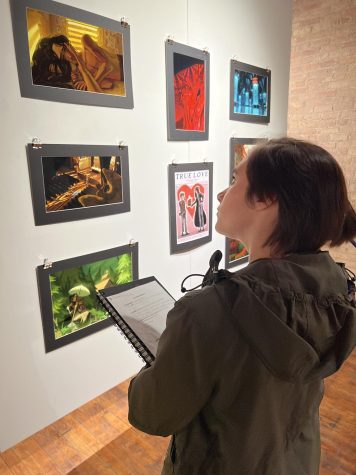What is ChatGPT and what does it mean for education?
February 8, 2023
The age of AI technology is upon us, and ChatGPT is at the forefront of the revolution. As a cutting-edge AI writing assistant, ChatGPT uses sophisticated algorithms to craft compelling content with accuracy and speed. Its ability to generate content quickly and accurately makes it an invaluable tool for business owners, content creators, and writers alike. With the help of ChatGPT, content creation has become faster, easier, and more efficient than ever before. Now, content creators, business owners, and writers have access to the best AI writing assistant on the market, revolutionizing the way they create and manage content.
That above was actually written by a chat bot, specifically Chat Sonic, when given the prompt “Write a newspaper opening paragraph for an article talking about ChatGPT and the AI revolution”. Recently ChatGPT, a free AI that writes a response to any prompt given, made by the company Open AI, has blown up on the internet.
Mariano Rodriguez, a junior interested in programming and a coder, explained the variety of things you can do with the AI, “I’ve used ChatGPT for many uses from playing a game of tic-tac-toe with it to using it to explain to me how to play chess better and also using it to generate code snippets for my AP computer science class.”
ChatGPT is similar to the AI art trend seen last year, that being a program which has access to art or writing already made and emulates it.
“So ChatGPT isn’t a true AI…because it doesn’t have a neural network and it isn’t learning. Instead, ChatGPT has been trained … It has looked at millions of lines of text written by humans on the internet. So the way it learned English was by watching us speak English,” stated Rodriguez.
ChatGPT has however been programmed to not respond to prompts asking for racist or misogynistic writings.
Education is an area where many have expressed worry over ChatGPT’s uses, fearing students will just insert the prompt and not have to actually write anything themselves, Mike Dayton, English teacher, compared it to the calculator. “When the calculator was brought into schools all of a sudden everybody was in a panic. ‘Oh my God, they’re not going to do their math calculations and whatnot’. And then math teachers had to adjust and say, wait a minute, this is a tool that we can use to help kids learn math.”
Dayton continued to express how it will drastically change English education, maybe for the better. “I’m excited, because I think that it’s going to force us to really consider how we assign writing, [and] what does writing teach…I think that it can model organizational structure in writing, provide ideas, [and] be used for editing and clarifying. Let’s put it this way, it’s here, it’s not going away, and so we better figure out a positive way to use it.”
Rodriguez also explained what this AI really is. “Well a lot of people are scared that these AIs are going to replace us, but I see things the other way when you think about it. Since this AI has been trained on our texts, our paintings, our music, they really are in the true sense of a word, our own reflection. So this AI can be like the best of us. It can teach like the best of us, it can sound like the best of us. It can make music like the best of us. It can paint like the best of us. So really while it might seem a bit doom and gloom, this AI is a reflection of us.”


